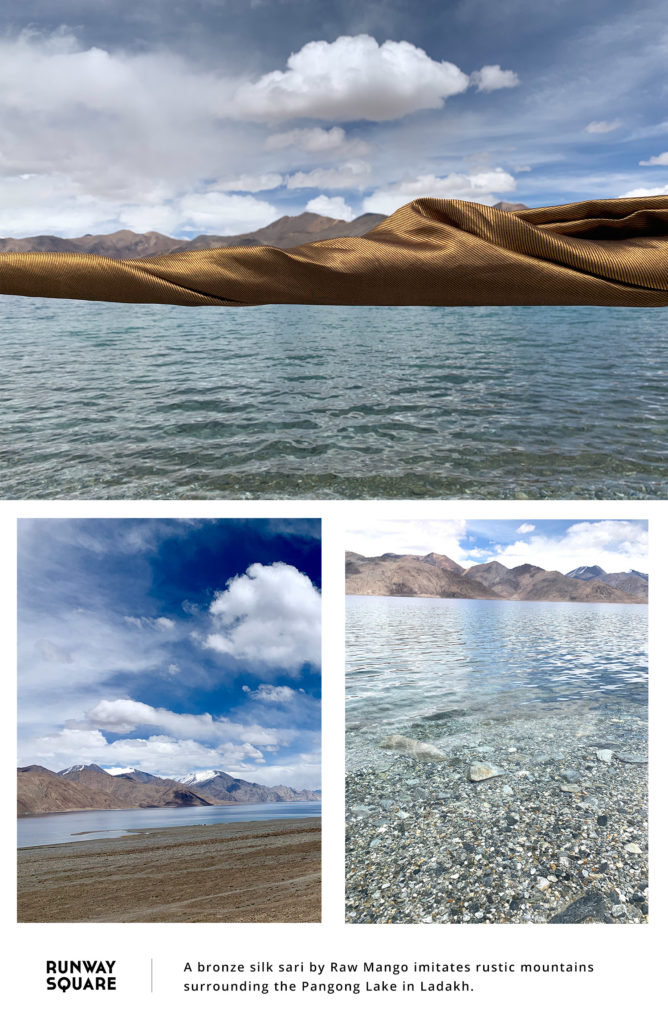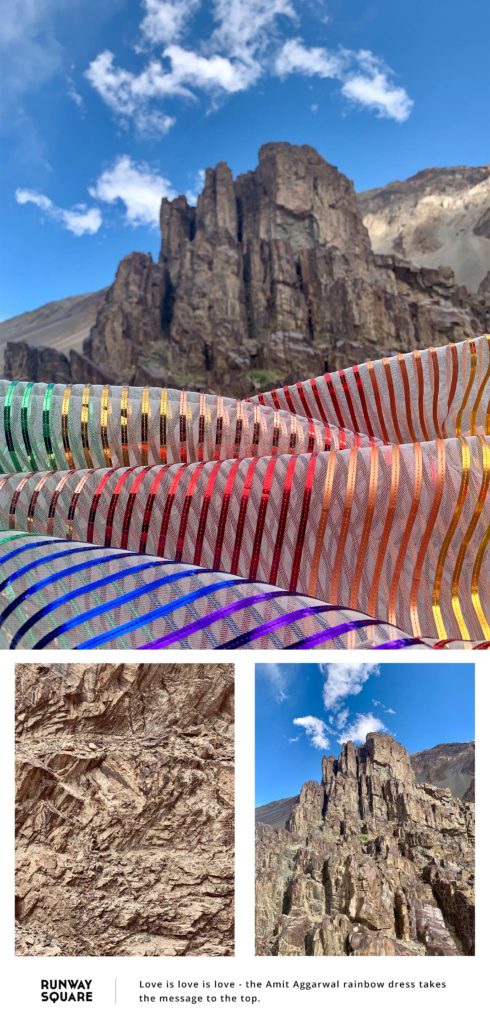- June 3, 2019
- FASHION + SHOPPING, TRAVEL + JETSET
Ladakh And The Landscape Of Textiles In India #shotoniphone
Our second editorial celebrates Ladakh’s historical influence on India’s love for textiles.

The landscape of textiles in India is just as diverse and overwhelmingly vivid as the topographical one. It’s the very fabric of our society that binds our many different cultures, religions, and lives together. The silk made in Tamil Nadu could be woven into a sari in Benaras, Uttar Pradesh by Momin Ansari Muslims and worn by a Hindu bride during her pheras. Looking back at the history of the influx of textiles into India, we will travel back in time using the very fabrics that have made its way through one of the most important trade routes in the history of Asia- the Silk Route, traversing from the ‘silk country’ of China to India, marking the first large scale commercial exchange in the history of the world.
The Silk Route or the Silk Road has been witness to both glorious as well as deathly encounters of trade, not only of goods and services but also ideas which traversed through the lunar landscape of Leh and Ladakh, making it one of its four corridors linking India with China. The traders braved challenging weather and topography to trade with India a textile that will be stitched forever into the country’s own fabric – silk. This very silk not only created employment opportunities for the people in the Upper Himalayas but also found its way into the country’s very own development, rise, and artistic evolution of textiles that we witness today. From Benarasi saris that are being woven for ages and are being updated by brands like Raw Mango and Ekaya to precision surface texturing by designers like Amit Aggarwal and Rimzim Dadu who are exploring the sheer malleability of many different materials. This changing landscape of the evolution and integration is just as fascinating as that of the gargantuan arid mountains and the azure blue waters of Ladakh. This #shotoniphone photo-story celebrates the indispensable part it played in letting the artisans and designers create pieces of wearable art.






Credits:
Creative Director: Charu Gaur
Fashion Director: Akshay Tyagi
Photographer: Aashim Tyagi
Writers: Charu Gaur, Shubhanjana Das
Stay & Travel: The Grand Dragon Hotel, Leh
Art Director: Shaista Syed / Kitsuné India
Creative Assistant: Karishma Gulyani
Fashion Assistants: Mayuri Nivekar, Fatima Baluch and Rajasi Datta
Hello! The Runway Square team is excited that you’re here and we would love to hear what you have to say about this story. Leave a comment below or holler at us on Facebook, Twitter or Instagram :*






